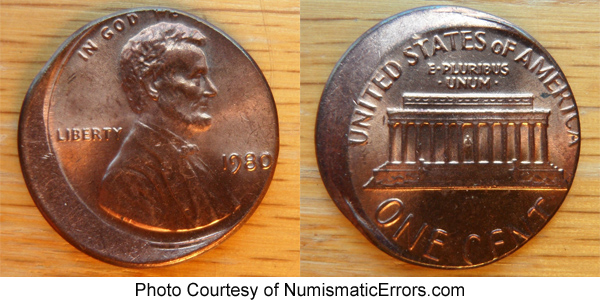
Error Guide
Part One
An error occurs when there is a problem with the making of the coin, not in the die itself. There are three different types of errors, planchet errors, die errors, and mint striking errors. Some examples are: strike doubling, laminations, struck through, off center, clipped planchets, capped dies, grease filled dies, die adjustment strikes, and die clashes.
Varieties are mistakes in the die and many coins get minted that are exactly the same. There are literally hundreds of Lincoln cent varieties. Some examples of different types of varieties are: doubled dies and re-punched mint marks.
Many collectors today don't understand the difference between the two and will advertise a doubled die as an error coin and so on.
Mechanical Doubling
Mechanical or machine doubling (MD)occurs when there is a problem in the striking process, not with the die itself. These errors do not appeal to collectors the way doubled dies do and don't have much collector value at all.
The machine doubling produces a flat, shelf like secondary image that is easily distinguished from the rounded, raised doubling produced by a doubled die. MD also narrows the devices where a doubled die will make them appear wider.
Cents before 1990 had the mint mark punched in by hand after the die was made, so a true doubled die before 1990 wouldn't show the same doubling on the mint mark. It is possible that a true doubled die will also show signs of MD.
The example below shows a 1969-S with classic MD. Notice how the devices appear smeared or pushed to one side. The raised parts are also narrower than the original digits would be. You can also see how the secondary image is flat compared to the rounded main image.
To learn more about doubling errors click here

Struck Through Grease Filled Die
To see more filled die errors click here
The example below shows a grease filled die error. This is a 1994-D with the 994 & D parts of the design mostly missing. This is caused by grease build up on the die clogging the 994 and the "D".

In 1922 there were no cents minted at the Philadelphia mint because of problems at the mint, so all of the cents for that year were minted at the Denver mint. Three different dies produced some cents that either did not show a "D" mint mark at all or showed a very weak one. The two dies that produced the weak but visible mint marks were due to filled dies. The "D" on the die became filled with dirt or grease. The remaining die had the mint mark ground off of the hub by abrasives and was never on the die so there is no trace of it on the coins produced by that die. Either of these types are valued by collectors. A 1922 no "D" Lincoln cent in uncirculated condition can fetch upwards of $20,000.00. Even in good condition they are worth several hundred dollars. Be aware that this is one of the commonly counterfeited Lincoln cents. Cent production was way down that year, so even a 1922-D in uncirculated condition can be worth over $200.00.
Struck Through Error
Below is a series of 4 images of coins struck from the same die. You can see the progression of the debris being flattened out more as each coin was struck, until it eventually flattened out and disappeared.
Photos courtesy of Stephen Pruett
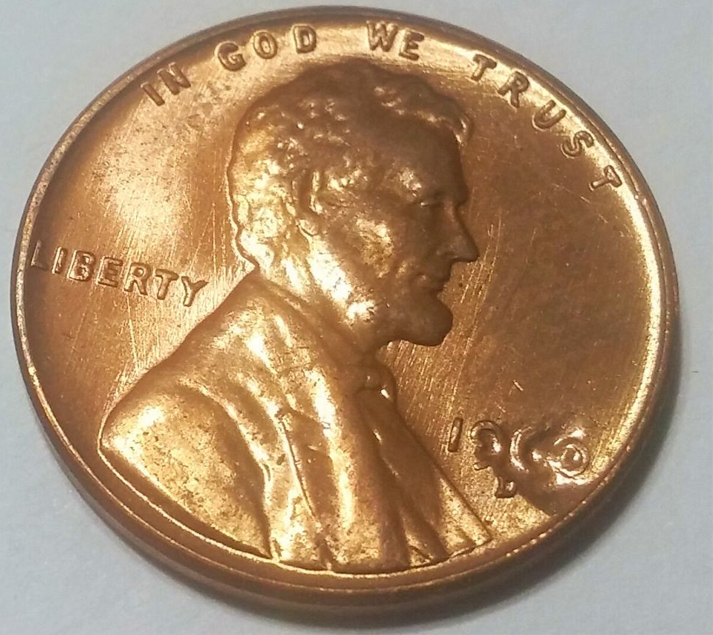
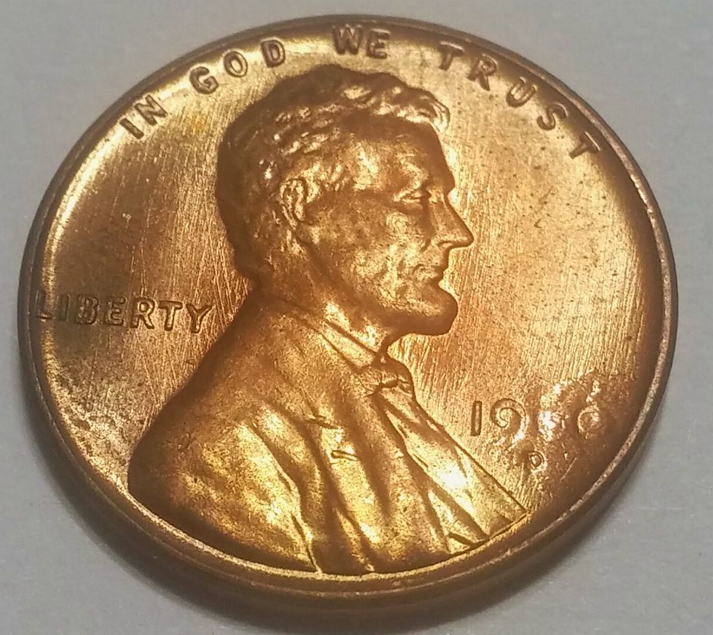

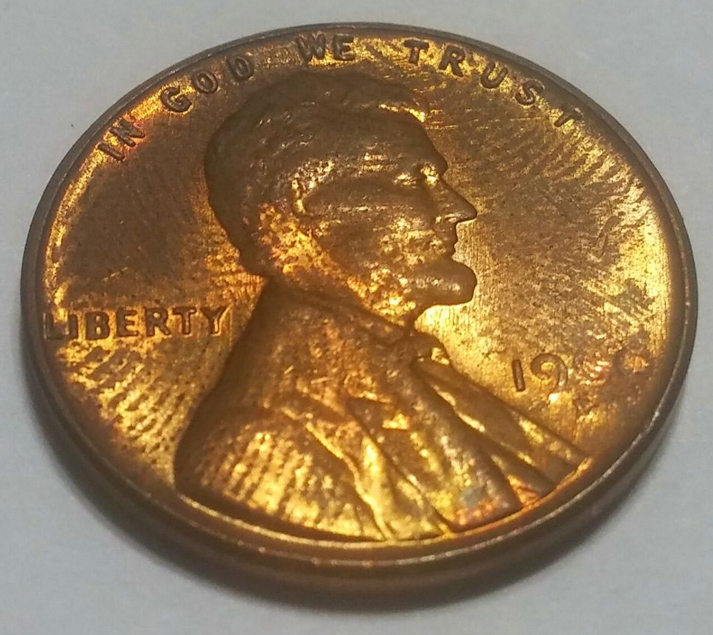
Struck Through Cloth Error
To see more struck through cloth errors click here
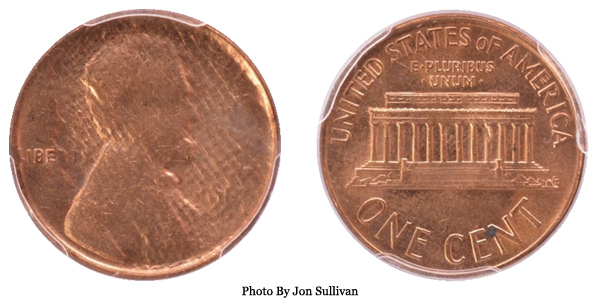
Struck Through Error
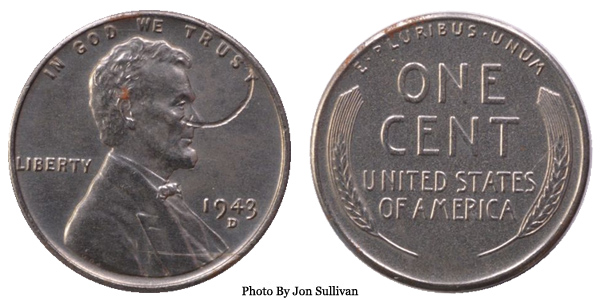
Struck Through Wire Error
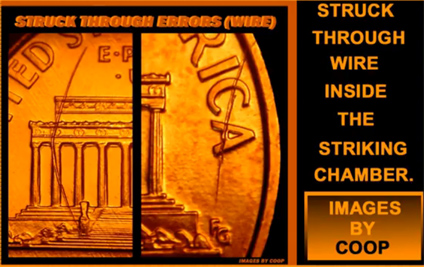
Over Polished Die
The example below shows a 1974-D cent that has details missing because of an over worked die that had been polished to remove clash marks. This can easily be confused with a filled die error.
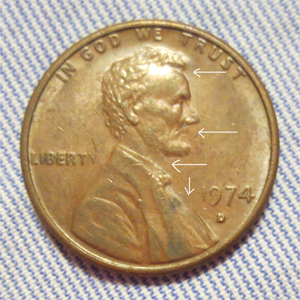
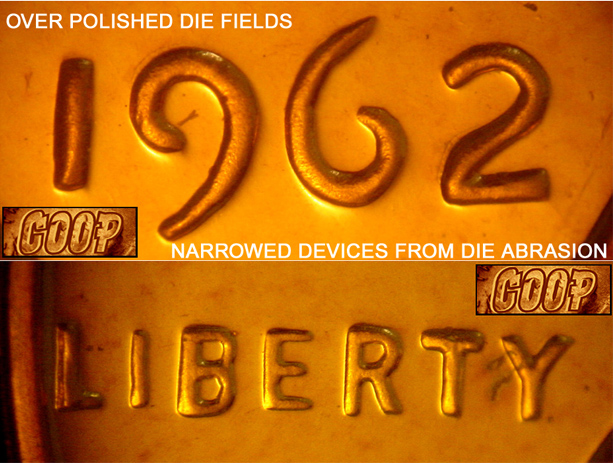
Struck on Wrong Planchet Error
To see more wrong planchet errors click here.
This example below shows a 1975 cent that has been struck on a dime planchet.
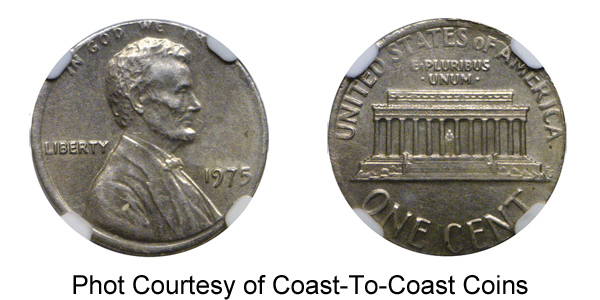
Double Denomination Error
To see more doubled-denomination errors click here
This example below shows a 2001 Jefferson Nickel that has been struck on a already struck Lincoln cent.
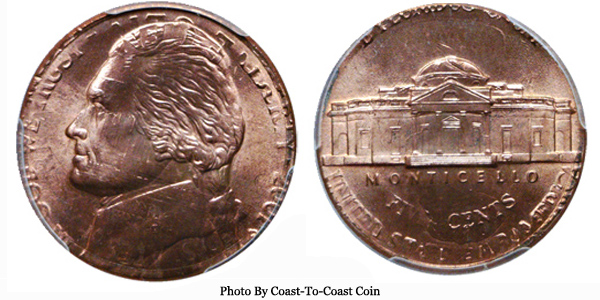
This example below shows a 2001 cent that has been struck over a Roosevelt dime .
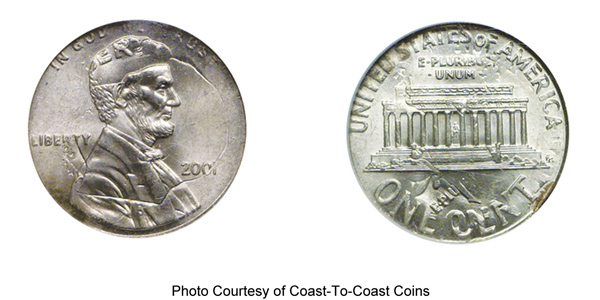
Capped Die Errors
A die cap error happens when a coin sticks to the die and strikes more coins. As it continues to strike more coins, the cent that is stuck to the die becomes shaped like a bottle cap, hence the name "Capped Die". Some collectors will refer to these as Bottle Caps or Mushrooms.
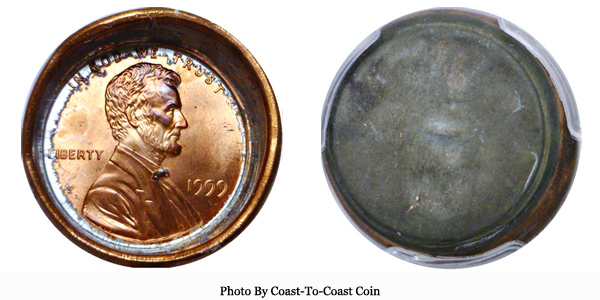
Reverse Die Cap
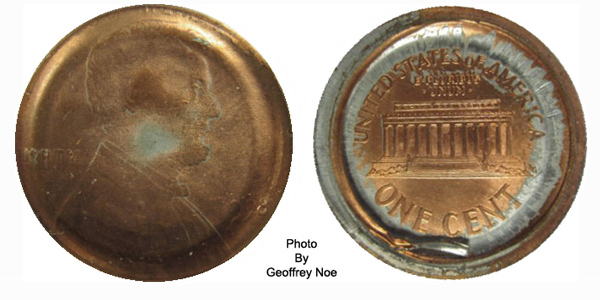
Struck Through Die Cap
Late Stage
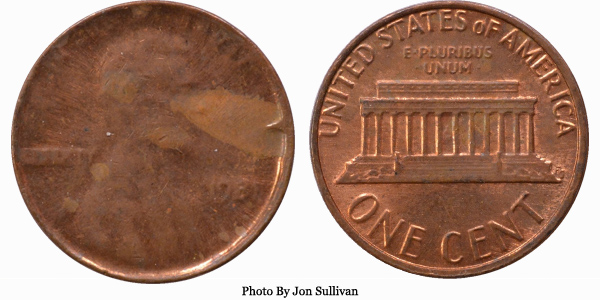
Off Center Strike
Off center strikes are caused by a coin being outside of the collar when the dies strike together.
To see more off center strike errors click here
